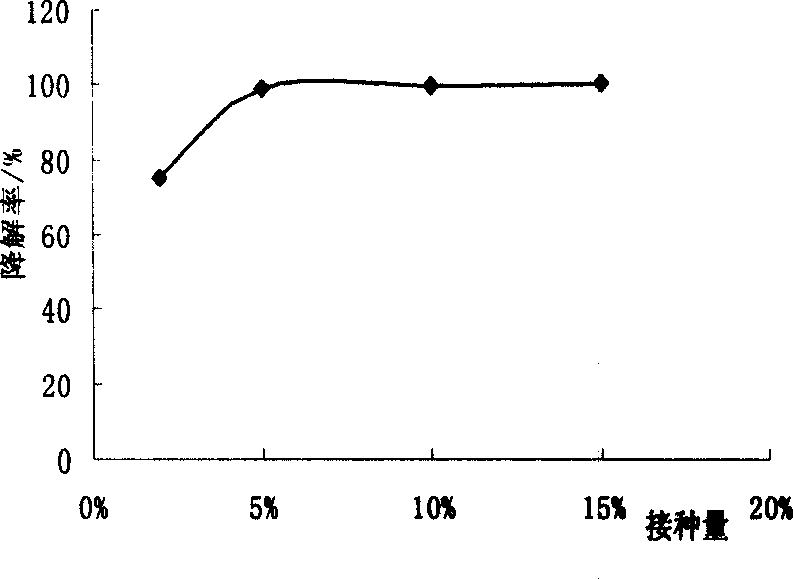Degradating bacteria for hexachlorocyclohexane pesticide residue and its produced strain
A pesticide residue degradation, 666 technology, applied in the field of 666 pesticide residue degrading bacteria and the bacterial agent produced by it, can solve the problems of relatively mature technology, long residual time, difficult to decompose, etc., and achieve protection The effect of good health, good removal effect and low production cost
- Summary
- Abstract
- Description
- Claims
- Application Information
AI Technical Summary
Problems solved by technology
Method used
Image
Examples
Embodiment Construction
[0024] 1 Isolation and identification of strains
[0025] Take 10g of contaminated soil, put it in 100ml of sterile water, and shake it for 5 minutes to get the soil bacteria suspension. Take 5ml of the bacterial suspension, add it to 100ml of inorganic salt medium, add HCH as the only carbon source, and culture it on a shaker at 30°C and 180rpm to obtain the enrichment solution, serially dilute and coat the LB plate with HCH added, so we get A bacterium that can grow on the medium and degrade HCH (see figure 1 ), named BHC-A, which was further purified and identified as Sphingomonas sp. after multiple transfers. Its main biological characteristics are: facultative aerobic, polar flagella, G-, Straight or Campylobacter, catalase and oxidase activity, V.P. reaction is positive, methyl red reaction is negative, yellow pigmentation , Capsules are produced around the bacteria, which can use glucose, glycine and fructose to oxidize and produce acid. The BHC-A strain can grow on ...
PUM
 Login to View More
Login to View More Abstract
Description
Claims
Application Information
 Login to View More
Login to View More - R&D
- Intellectual Property
- Life Sciences
- Materials
- Tech Scout
- Unparalleled Data Quality
- Higher Quality Content
- 60% Fewer Hallucinations
Browse by: Latest US Patents, China's latest patents, Technical Efficacy Thesaurus, Application Domain, Technology Topic, Popular Technical Reports.
© 2025 PatSnap. All rights reserved.Legal|Privacy policy|Modern Slavery Act Transparency Statement|Sitemap|About US| Contact US: help@patsnap.com



